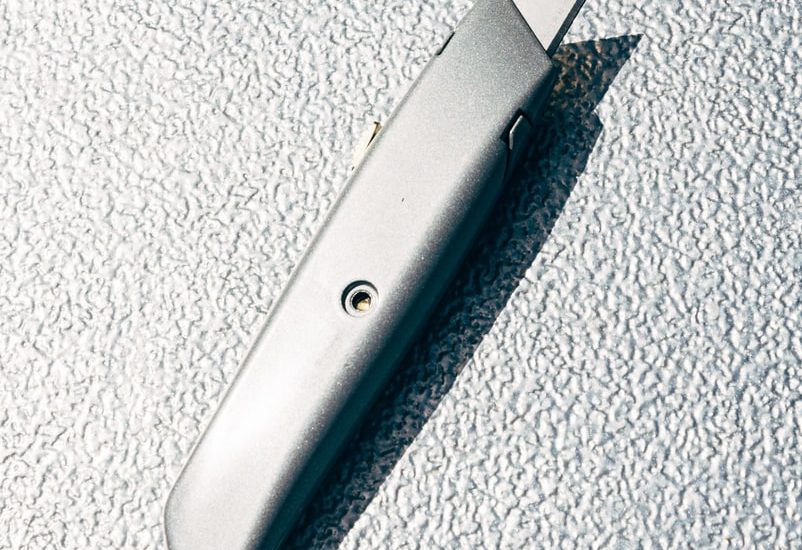To err is human. And if there is something sharp like a box cutter or knife involved, your goal is to be on the other side of this phrase. The Bureau of Labor Statistics reports that more than 183K hand-related injuries occurred at work in recent years. How? Some people chose not to wear protective gloves while using cutting tools. Others were more prone to distractions and complacency. When doing the same task over and over again, finger-related injuries can so easily happen.
This is one of many reasons that you need to find a box cutter that is not only safe to use but also comfortable for repeated use. These box cutters are just a few examples of manual and auto-retractable multi-purpose tools that make opening packages and other work tasks much easier to do. But once you have a box cutter that looks like it does the job, what else do you need to know? Let’s explore.
What Features Should Your Box Cutter Have?
The main purpose of the tool is self-explanatory: to cut open boxes and/or break them down. However, which box cutter you choose matters more for the task, the level of safety, and what makes the most sense for your business and/or professional needs.
For repeated use, an ergonomic handle can largely eliminate the kind of hand fatigue one may experience in an industrial workplace such as a mailroom or stockroom where boxes are opened repeatedly. And in a more cluttered workplace where office and stock supplies can be seen lying around, a lanyard hole to easily hook the box cutter to a keychain or belt hook makes it easier to keep tabs on where your box cutter is at all times. Whether you use a chain rope, yarn, string, or strong plastic, use whatever keeps your box cutter handy and safely attached.
In a workplace with a team of people working on packaging, it couldn’t hurt to make sure your box cutters are ambidextrous, too. Lefties make up 10 percent of the world. Although only 1 percent of the world is naturally ambidextrous, that 1 percent still consists of 7 million people who may enjoy the perk of shifting a box cutter from one hand to another.
Although there is still a small risk of an accidental cut, finger-friendly blades as opposed to traditional blades can help lower workplace and at-home slip-ups. Whether using a pointed-tip blade or a rounded-tip blade, a ceramic safety blade is kinder to your fingers than the metal versions you may be used to seeing in stores. Ceramic blades also can last as long as 11 times longer than a traditional blade would. They also don’t accumulate rust, are oil- and lubricant-free, and don’t require any extra maintenance. Just cut, close, and go about your day.
What Size Box Cutter Should Be Purchased?
Contrary to what some brick and mortar stores sell, box cutters don’t all come in one size and shape. There are slim pen cutters, utility knife box cutters, mini cutters, and pen cutters. Smaller versions of this multi-purpose tool, such as a mini cutter, may have a built-in magnetic option to stick on a refrigerator or metal-plated fixtures to grab and replace at a moment’s notice. (The smaller the box cutter is, the more likely you’ll probably want to put it in a place that’s obvious so it doesn’t get buried on your floor or in your pockets.)
What Else Can a Box Cutter Be Used for Besides Boxes?
While a box cutter’s primary use is to open and break down boxes, you may have come into contact with boxes that are packaged more securely than others. This usually happens when something heavy or fragile is inside. You can use a box cutter to cut plastic string and wrapping, along with heavy-duty tape, and to create precision cuts. A precision cut often helps workers recycle boxes. Unlike with jagged knives or scissors that can too often rip a box apart, if the box is opened and broken apart neatly—and is made from durable cardboard material—it can be used again and again. Labels can also be safely removed and replaced for its next sender and recipient.
Depending on the location, recycling programs make it easier to collect broken down boxes and packaging supplies to be used at other facilities. The good news is, as long as the boxes are still in good condition, as much as 70 percent of commercial cardboard-boxes are recovered for recycling.
On Your Next Box Cutter Shopping Adventure
As you can see above, box cutters come with many different shapes, sizes, features, and uses. If you have a box cutter already but are now wondering whether you should test one out with features you don’t currently get to use, there’s nothing wrong with diversifying your work tools. No matter which box cutter you choose, make sure to follow the packaging directions, cut away from your body, and reuse and recycle materials as much as you can.

